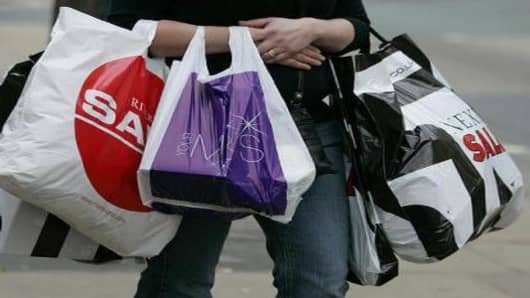A flood of Australian data on Monday showed a disappointingly flat month for retail sales, lackluster labor demand and tame inflation, a combination that only added to expectations for a cut in interest rates this week.
Data from the Australian Bureau of Statistics showed retail sales were unchanged in October at A$21.6 billion ($22.5 billion) as consumers cut spending on household goods. Analysts had looked for a rise of 0.4 percent and the soft result knocked the local dollar down a quarter of a cent.
The Reserve Bank of Australia (RBA) holds its monthly policy meeting on Tuesday and investors are betting heavily it will cut the cash rate by a quarter point to 3 percent, so matching the record low reached during the global financial crisis.
"The market has moved pretty quickly over the past week to pretty much fully discount a move tomorrow, and these data aren't really going to change any perceptions about that," said Michael Turner, a strategist at RBC Capital Markets.
A clear majority of analysts in a Reuters poll expect the RBA to pull the trigger, in large part to help offset a coming cool-down in the country's red-hot mining sector.
Interbank futures put the chance of an easing on Tuesday at three-in-four, while swap rates put it at 88 percent . Markets are also leaning toward a further cut to 2.75 percent some time next year.
The RBA has already cut rates by 100 basis points since May, citing a slower global economy, a softer labour market at home and lower prices for some of Australia's major resource exports.
The pullback in prices has led some miners to rein in their more ambitious spending plans such that the RBA now believes the boom in resource investment will peak earlier than previously expected, around the middle of next year.
As a result, policy makers are trying to stimulate other sectors of the economy, and particularly home building, to fill any hole left by the eventual pullback in mining spending.
So far, lower rates have had a limited impact on cautious consumers who prefer saving and paying down debt.
That has been tough for the A$260 billion retail sector which accounts for around 18 percent of Australia's economic output and is the second-biggest employer after the health industry, with 10.5 percent of all jobs.
It is also one reason analysts expect unemployment to creep higher from the current 5.4 percent.
A survey of job advertisements from Australia and New Zealand Banking Group showed a drop of 2.9 percent in October, the eighth month of falls and an ill omen for hiring.
"Further easing is necessary to assist the economy in its transition towards a lower dependence on mining investment growth," said ANZ's head of Australian economics, Ivan Colhoun.
"We continue to expect a 25 basis points cut at the RBA Board meeting tomorrow and for the Bank to maintain a strong easing bias in 2013."
Analysts see plenty of room to ease monetary policy given Australia's Labor government is tightening its purse strings while domestic inflationary pressures remain benign.
A private gauge of inflation out on Monday showed a 0.1 percent dip in November thanks to falls in prices for fruit and vegetables, petrol and holiday travel.
The TD Securities-Melbourne Institute's measure of annual consumer price inflation stood at 2.5 percent, right in the middle of the RBA's long-term target band of 2 to 3 percent.


